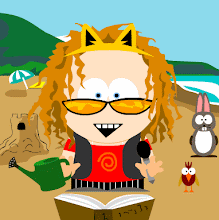more on that aquarium exhibit and beyond
I'll admit that I did not view the new exhibit very carefully this first time around. It was busy, and my guardedness around what Isaac might take in led me to steer more quickly through it than I otherwise might have. I'm also not in favor of the aquarium saying nothing on hard truths and thorny topics. But I am still troubled. It's kind of a “first do no harm” kind of issue.
Maybe it's a matter of what is presented in which form and in which order that needs review when we're thinking about serving a variety of ages and abilities to process this information. There may be, as the website quote I included in the last post suggests, lots more positive change stories enveloped in this new exhibit than were obvious to me. However, if they are mainly textual, that is not – even with a mama reading along – what my young child is going to take away from the experience.
There are all kinds of learners out there. But I'm going out on a limb here to say that a majority in our society might fall into the categories of visual and experiential. What you see and what you experience make the biggest, earliest impressions.
The same might be true for my college-age students. I critique the aquarium's exhibit, not from a place of knowledge, but from one of struggle. I battled how to present information for 15 weeks during my fall “environmental writing class.” For these kids, the dictate of the day is “save the planet.” And, believe me, they are over it. Yawn. Apathy is the top layer of all those other potentially negative outcomes like fear, hopelessness, etc. With the readings I required, it was a constant push/pull on looking for hard-hitting information and looking for uplifting outcomes. I can't be sure that any of it made any huge impression. But then there were the other assignments. The ones outside of the books.
I have a lot of doubts about teaching. A lot. Doubts that surface when I think about doing it, while I'm doing it, after I get my student evaluations, doing it in combination with real life lessons, in settings where grading becomes the salient carrot on the proverbial stick. I could go on. But I know a few things for certain that are good, solidly good stuff, the stuff they might even remember for years to come and that wouldn't have happened without the environment writing class we created together.
Things like two of my students touring Jeffers' Tor House guided by one of the most passionate, endearing local poets I know, who generously gave of his time to touch their lives. Like one of my students who wrote past her language issues and into a piece about a life-changing encounter with dolphins in a way that was so moving it brought both of us to tears. Like students using the “idle time” assignment to sit quietly and discover for the first time places and their own thoughts they'd rushed past for months. Like the students that found the thrill and vitality behind reading their own work aloud into a microphone for an eager crowd.
I know these things were good mostly because the students told me so. In weak moments, even these pierced angels of cynicism can admit when they've experienced something that has entered their hearts.
One day, I had made my class read excerpts from Edward Abbey and Bill Bryson on the same night. This was, one: curious because of their screamingly different approaches to writing, and two: dreadfully mean (according to my students) because they were each rather long passages.
One of my students, in discussing Abbey out there on his own among the rocks and coyotes, and Bryson with his page after page dedicated to his fear of bears along the Appalachian Trail, brought up the fact that nature for her is just downright “scary.”
“Pretty hard to save something you're afraid of, huh?” I tried. A stillness dipped into the room for a moment, a just-perceptible beat of quiet. The girl under direct address nodded slowly.
I would argue the same goes for climate change. If we are in a state of fear, we are much less likely to be able to do something about it. Far be it from me to argue for the All-American happy ending. Honesty is a bad habit of mine, truly. But it does seem like taking another look at “cheery” messages, might be worth our while.





 Stumble It!
Stumble It!
2 comments:
Too cheery and too frightening - both bad. Also, too general. Personalizing it is best. How does it effect the individual? That's something I can never seem to remember when I need to.
I think we are (not so) slowly devolving into a society of hands in the air panic brought about in large part by a media that resembles bad circus barking.
plus so many seem to not want to think or do
if they can say they're frightened then it removes responsibility
Post a Comment